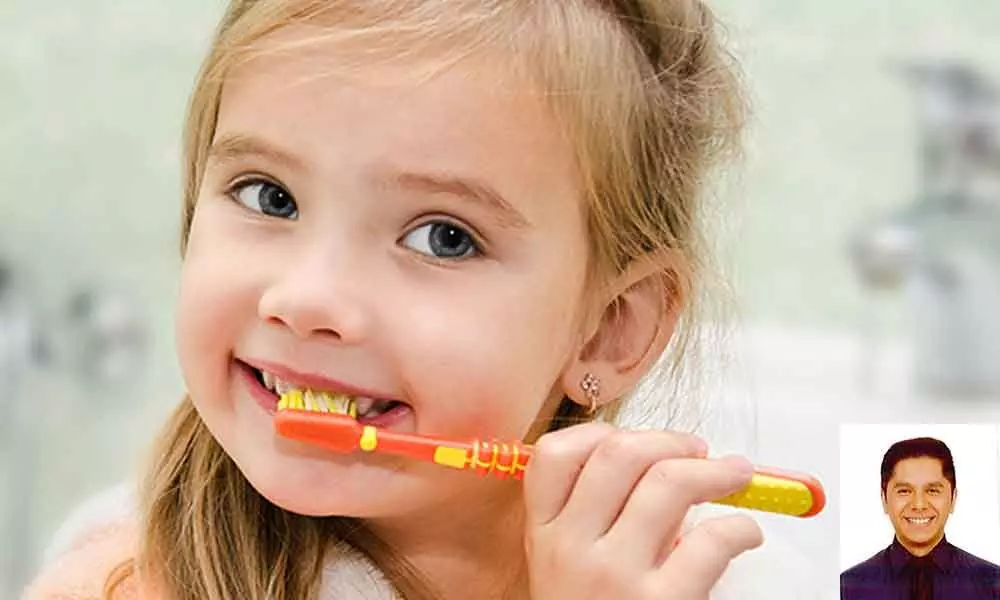Do children need root canals?

Do children need root canals?
Tooth decay, or dental caries, refers to the breakdown of the tooth structure through acid formation over its surface.
Tooth decay, or dental caries, refers to the breakdown of the tooth structure through acid formation over its surface. This is caused by naturally occurring bacteria within our mouths that act on sugary substances as well as food particles stuck between the teeth. Improper brushing, excessive consumption of sugars, and decreased flow of saliva due to decreased water intake can all encourage the growth of bacteria on the tooth surface.
Our teeth have three naturally occurring layers, the first being the enamel which is the outermost white layer of our teeth. When dental caries initiates, it can lead to the loss of calcium from the enamel and can present with either chalky white discolouration or small holes on the tooth surface often called cavities. These can be arrested through toothpaste and gels containing fluoride, a compound that helps strengthen the tooth surface and stop the bacterial activity. The cavities can be later filled with a silver or white tooth filling.
The second layer of the tooth is the dentin, which lies just below the enamel, and is yellowish in colour. Once dental caries reaches the dentin, we begin experiencing severe tooth sensitivity. The infection at this stage leads to a bigger cavity on the tooth surface that attracts even more food particles and bacteria, finally exposing the innermost layer of the tooth – the dental pulp.
Infection reaching the dental pulp is a frightening experience, mostly due to the severe pain it may cause. The pain is strong enough to keep anyone up at night, which is a sign of the tooth slowly dying, and the only relief is an anaesthetic injection followed by a root canal treatment. Root canal treatment is an effective measure to preserve a tooth by removing its nerves, replacing the dental pulp with suitable filling material, and later a metal or ceramic crown. Not only does the tooth remain disinfected, but it also ensures that the integrity of the bone around it is maintained, as well as the position of the neighbouring teeth.
If the pain is continuously ignored, the infection can go beyond the tooth to reach the bone around it. That leads to the formation of pus, often seen as small gum swellings around the infected tooth. In severe infection, there may be so much pus, that it may lead to huge swellings around the face and neck. These swellings push against the windpipe, causing difficulty in breathing, and require surgical management. It is only sensible to prevent the infection from reaching that stage through timely treatment. If the infection has significantly eaten away most of the tooth structure, not even a root canal treatment can save it, and the tooth has to, unfortunately, be removed.
Root canal treatment has been commonly performed on permanent teeth, but should it be done for a milk tooth, which would fall off someday anyway?
The answer remains a resounding yes. Milk teeth have an important role to play in the overall development of the future dentition. They act as placeholders for the permanent teeth, which start erupting from age 6 to 13 years. If they are taken out earlier than their time of natural shedding, the space left behind may close with time, preventing the permanent teeth from erupting in their correct position. That loss of space may further require correction through space regaining appliances and tooth braces. If the misaligned teeth are not corrected, they might even lead to severe gum disease, due to inadequate access to certain tooth areas while brushing. This further adds to the overall treatment cost and requires extended visits to the dentist.
Moreover, as the child grows and learns new words, certain sounds such as "d", "n", "the" that require the tongue to come in contact with teeth could become difficult. The absence of teeth will impair the overall speech development of the child and may even lead to a lisp formation. It becomes even more troublesome when the child involuntarily begins thrusting the tongue between the spaces left behind after tooth loss. Such a habit leads to abnormal muscle function and can cause improper eruptions of permanent teeth.
We live in an age of ever-advancing techniques, and newer materials allow dentists to perform dental procedures with excellent results. The age of removing teeth that can easily be saved is slowly passing by. Parents often fear the side effects of any treatment on the overall health of their children. As routine practitioners, paediatric dentists state with certainty that root canal treatment of milk teeth is done through materials that are safe, non-irritating, and have no effect on the rest of the body. It is a procedure that takes few visits to a dentist and can prevent severe problems from occurring.
(The author is senior lecturer, Paediatric & Preventive Dentistry, MCODS, Manipal)




















